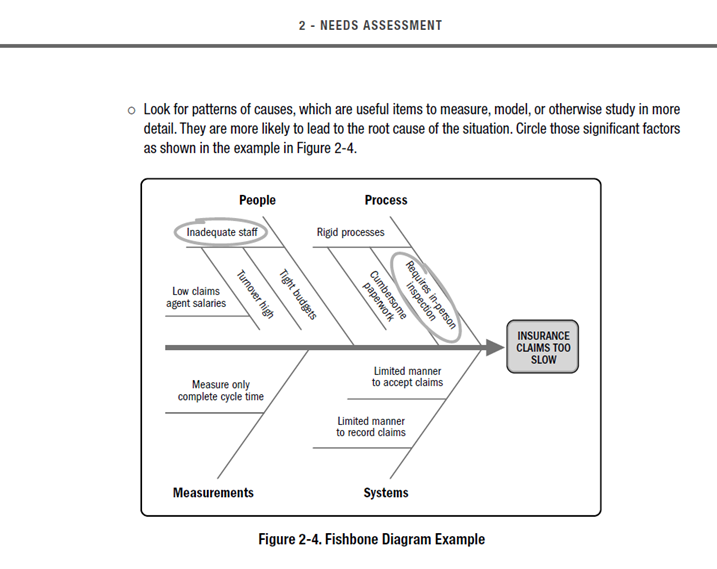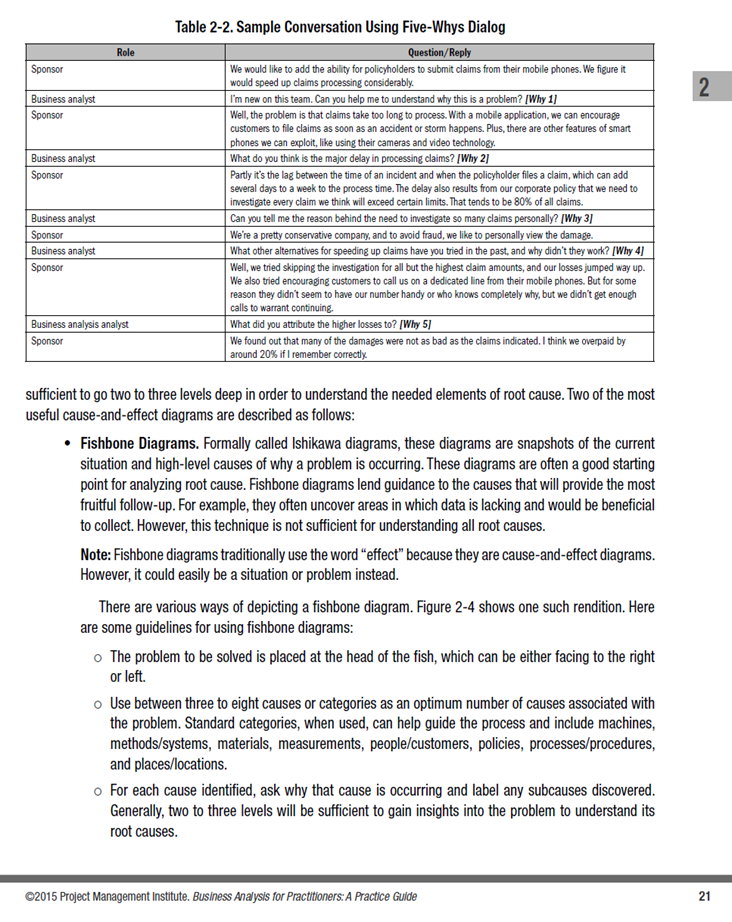
By: Project Management Academy on May 27th, 2021
Root Cause Analysis Steps PMP Exam Guide
Project Management | Root Cause Analysis
No matter how well-planned, a project can always run into some problems. After a problem occurs, it is crucial for you to understand what happened, why, and how to fix it and prevent it from happening again. To do this, you need root cause analysis.
Root cause analysis is an essential tool for getting to the root of a problem and informing your next steps for solving or preventing the problem and any related issues. It is also vital to understand root cause analysis for the PMP exam.
Read through this guide from your Project Management Academy experts to learn more about root cause analysis, helpful diagrams, and what you need to know for the PMP exam.
What is root cause analysis?
Root cause analysis is a tool used to identify the source of a problem and find a solution that prevents the problem from returning. Particularly for a complicated, stubborn, or unfamiliar problem, it can help isolate what happened, when, where, and why.
Imagine trying to remove a weed. Cutting off the top of the weed will likely result in it growing back. To get rid of the weed completely, you need to pull it up by its root. Though many contributing factors can worsen a problem, the root cause is the problem’s origin: if the root cause hadn’t happened, the problem wouldn’t have happened either.
Benefits of root cause analysis
As a project manager, you may find performing a root cause analysis can help with both problem-solving and risk mitigation.
- You can use root cause analysis to diagnose why quality issues occur during a project’s execution and find effective solutions. This also includes recognizing types of issues:
- Root cause: the main source that initiates a problem
- Causal factors: contributing sources that aggravate a problem
- Non-causal factors: other issues that did not influence the problem
- You can identify potential risks through root cause analysis and determine if there is a root cause you can avoid during execution.
Early detection is crucial to solving problems before they get out of control. Project Managers should never wait until the problem is too overwhelming to ignore! As soon as a problem is identified, start working on a solution to prevent any harmful or undesirable outcomes.
Your root cause analysis is complete once you have verified the problem is solved and will not happen again. Ask yourself:
- How effective was the solution?
- Did you consider every potential solution and choose the best one?
- Is there any potential impact on other parts of the project?
- Is there any chance the problem might recur?
Root cause analysis can be tricky to understand at first, but it becomes a powerful tool for PMP credential holders once you grasp the concept. Let’s look at some tips and diagrams to help you master root cause analysis for the PMP exam.
Root cause analysis steps for the PMP exam
Since every problem can have factors that make it unique, there is no single guide or sequence of steps for performing a root cause analysis. Instead, there are various general approaches to root cause analysis using different tools. It’s up to you, the future PMP credential holder, to determine what needs to be done to isolate the source of the problem and find the right solution.
Fishbone Diagram
The fishbone diagram is also known as the cause-and-effect diagram. This diagram is one of the most common and effective ways to do root cause analysis. It is used to display different characteristics of the problem you’re facing in a clear and approachable way.
Use a fishbone diagram to outline various steps that led up to the problem, demonstrate where issues might have occurred, and visualize causal relationships between events. Laying out the chain reaction of events can help you understand which events happened due to other events.
There are various ways of depicting a fishbone diagram. The following example investigates the problem of insurance claims being too slow. Take a look at this root cause analysis example of a fishbone diagram, which may resemble a chart you might be asked to interpret on the PMP exam:

To create a fishbone diagram like the example above, follow these guidelines:
- Put the problem that needs to be solved at the head of the fish. Usually, the diagram faces right, similar to above, with a “spine” extending to the left. The problem in the example above is that insurance claims are too slow.
- Identify between three to eight causes related to the problem and give each one a “bone” coming out of your diagram’s spine. The diagram above uses the example categories of People, Process, Measurements, and Systems.
- Dive deeper into these categories and label any sub-causes. In the example category of Systems used above, there are two sub-causes: limited manner to accept claims and limited manner to record claims.
- Look for patterns or related causes. The pattern you identify should lead you to the root cause of your problem. Circling any significant or related factors may help guide more in-depth investigations to identify potential solutions.
Once you have completed your fishbone diagram, it should be easy to identify the root cause by looking at the pattern of issues that ultimately resulted in your problem. From there, you can start to identify and enforce solutions.
Five Whys
Another way to explore the chain reaction of events is through the Five Whys. The theory behind this approach is asking “why” five times will get you to the root of “why” a problem happened. You may not literally ask “why” up to five times, but this approach will allow you to go deeper through different levels of issues to clarify the root cause. It should look something like this:
- Why did Problem A occur? Because of Issue 1.
- Why did Issue 1 occur? Because of Issue 2.
- Why did Issue 2 occur? Because of Issue 3.
- Why did Issue 3 occur? Because of Issue 4.
- Why did Issue 4 occur? Because of Issue 5, the “root cause” of all other issues.
To use the Five Whys, you should start with defining and understanding the problem. This will help you break it down simply enough to begin diving deeper into “why.” You may find this technique to be a helpful companion to a fishbone diagram, or it could help guide conversations with stakeholders and project team members so you can learn more about the problem.
Take a look at this root cause analysis example of a Five Whys conversation in preparation for the PMP exam:

In this example, each “why” is reframed as a more approachable question that does not leave the stakeholder (the sponsor) feeling attacked or accused. This allows the investigator (the business analyst) to engage the stakeholder in a conversation that reveals valuable information and gets deeper into the ultimate reason “why” the problem is happening.
Root cause analysis PMP exam tips
As we mentioned, there is no single approved sequence of steps for approaching root cause analysis. Some sources may claim they have something like “the ultimate five-step guide to root cause analysis,” but there are many approaches you can use to perform root cause analysis successfully. So, what do you really need to know?
- Root cause analysis is a data analysis tool used to help PMs determine the cause of problems that occur during project planning and execution.
- Root cause analysis is used in four of the six project management process groups: Project Integration, Risk, Quality, and Stakeholder Management.
- Various tools and diagrams help you perform a root cause analysis, such as Fishbone Diagrams and the Five Whys. These tools should help you define the problem, determine causal factors by collecting data, and identify the root cause and best solution.
- Techniques for collecting data to complete your root cause analysis include brainstorming, document analysis, facilitated analysis, facilitated workshops, interviews, and observation.
The value provided by this tool is it helps dig into what may be causing issues or preventing your project from proceeding as planned. Example problems include quality issues during production, sudden stakeholder absences, or variance from planned budgets. Performing a root cause analysis can better inform the PM and your team about how problems began and the best way to resolve them.
Do you have more questions about how to perform a root cause analysis? Are you interested in acquiring the knowledge, tools, and resources needed to pass the PMP exam? Get in touch with your experts at Project Management Academy to learn more about our PMP boot camp course.


